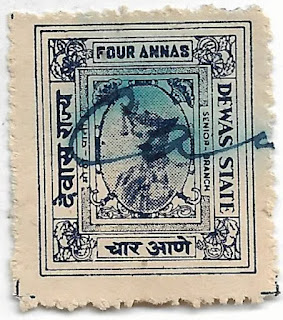Dhar State was a princely state. It was bordered on the north by Ratlam state and Sailana State, on the east by parts of Gwalior and Indore states, on the south by Barwani State and on the west by Jhabua State.
Dhar State, 1 Mohur, 1943, gold
Dhar began as one of the states during Maratha dominance in India about 1729 AD and was founded by Udaji Rao Puar, a distinguished Maratha general who received the territory as a grant from the Chatrapati.
Yeshwant Pao Puar also had a prominent role in the northern expansion of the Maratha Empire. During the Pindari raids, the state's territory was whittled away, until it was restored in 1819, when it signed a Subsidiary alliance agreement with the British East India Company and became a Princely state, enjoying indirect rule under British protectorate.
The Dhar state was composed of Sardars, Jagirdars, Istamuradars, Mankaris, Thakurs and Bhumias. The state was confiscated by the British after the Revolt of 1857. In 1860 it was restored to Raja Anand Rao III Pawar, then a minor, with the exception of the detached district of Bairusia which was granted to the Begum of Bhopal.
In 1948, it became a part of Madhya Bharat.
1/12 Anna, Victoria, Anand Rao Pawar III, 1887, copper 2 gm, Obverse: Victoria Empress, Reverse: value, date within beaded circle




























